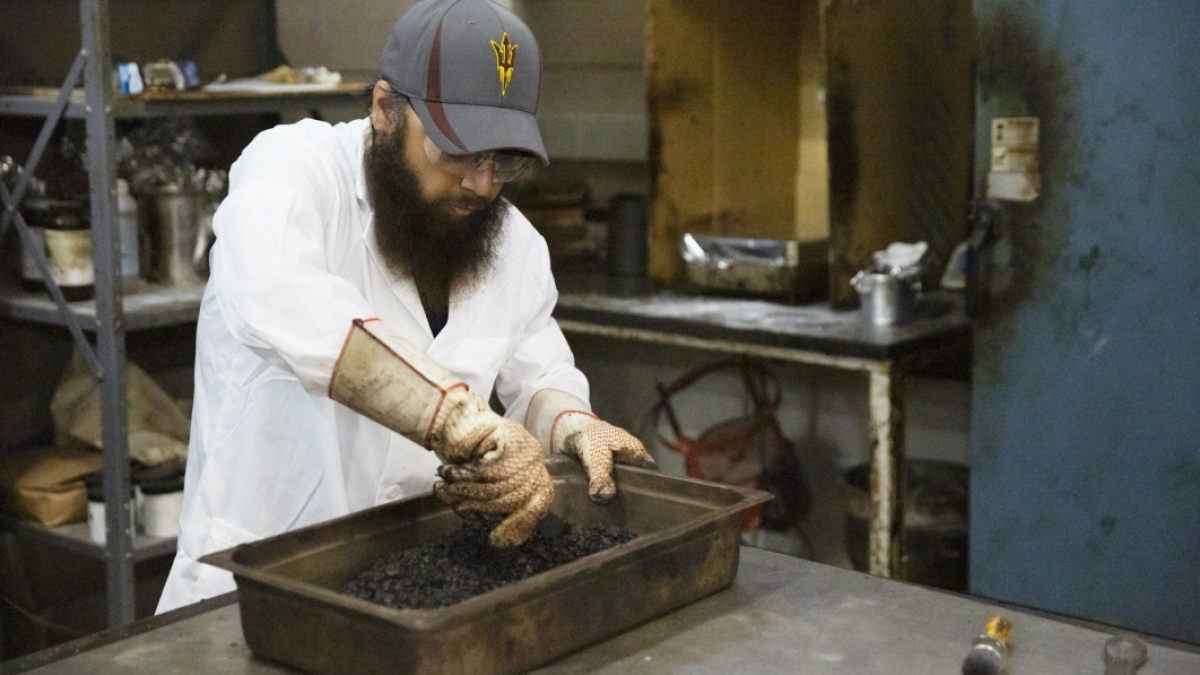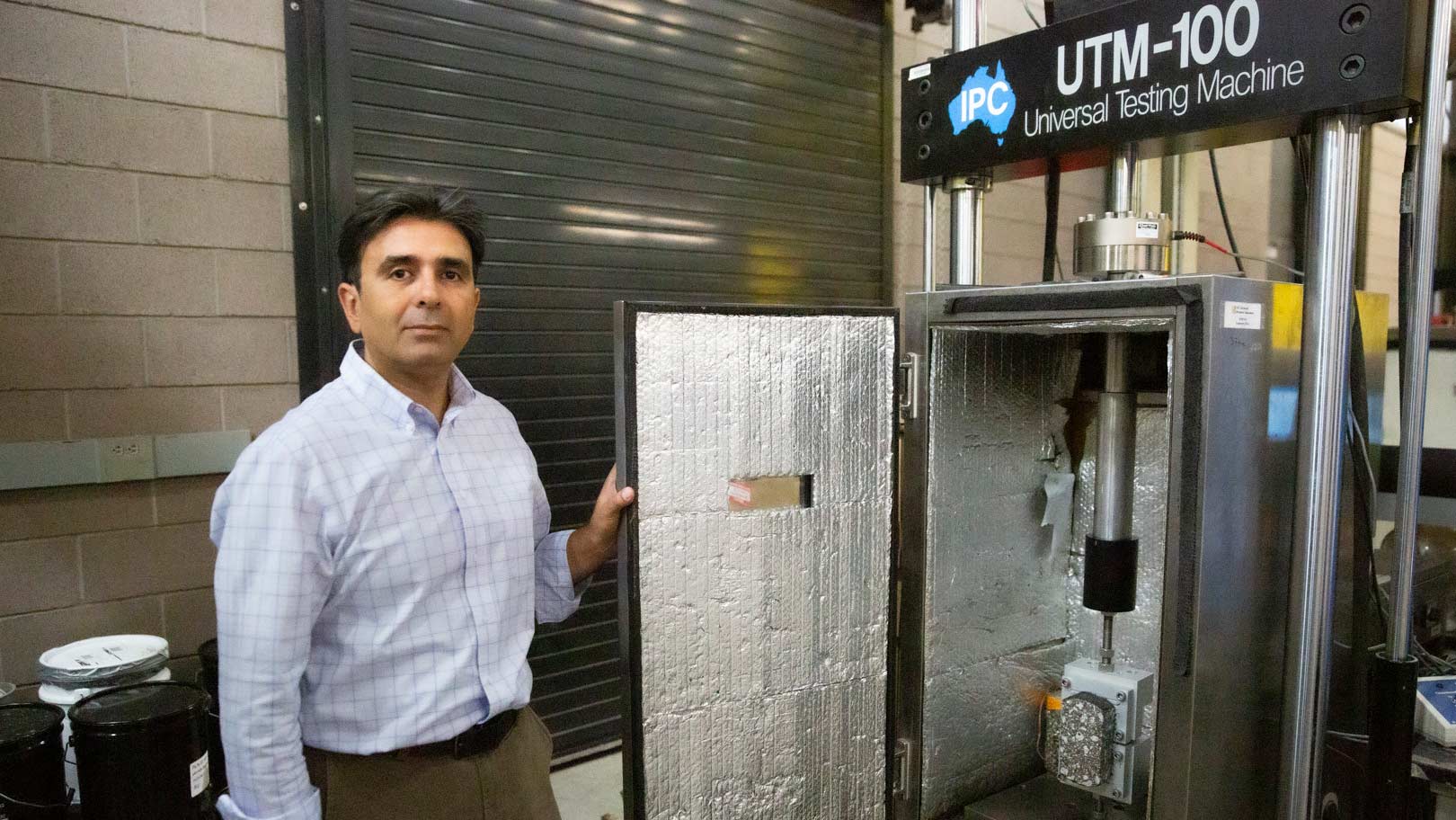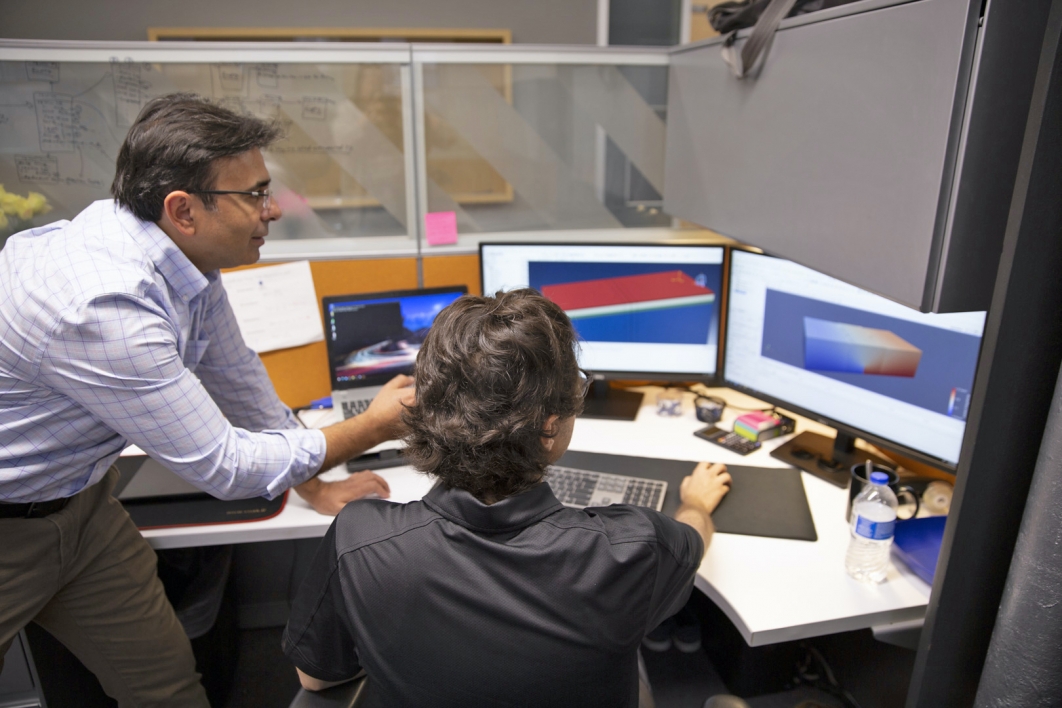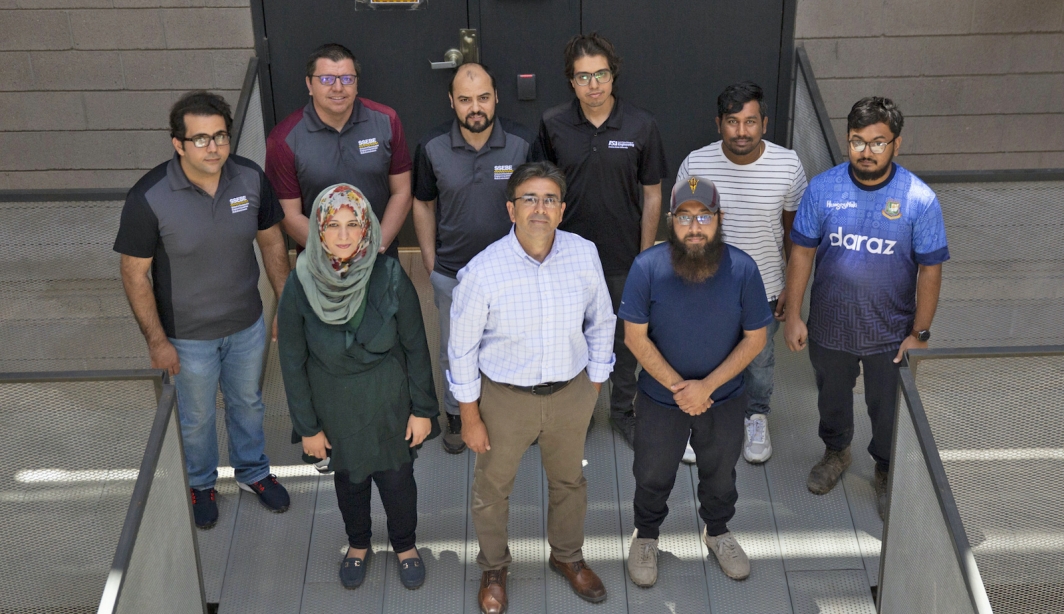The roads we drive on are made up of crushed and screened aggregates of gravel and sand mixed with a petroleum-based asphalt binder that is a byproduct of the oil refining process.
The asphalt binder, which acts as a glue, is only 5% to 6% of the mixture but is the biggest determining factor of the cost per ton, says Hasan Ozer, an associate professor of civil, environmental and sustainable engineering in the Ira A. Fulton Schools of Engineering at Arizona State University.
“Drastic changes in oil prices due to supply and demand interruptions from COVID, electrification of the transportation industry or wars like the one in Ukraine can have a direct impact on the cost of roadway construction,” says Ozer, who teaches in the School of Sustainable Engineering and the Built Environment.
In addition to rising costs, Ozer says roads have a limited lifetime before they need repair or replacement — and the dry and hot Arizona climate greatly reduces that lifetime.
“We often use premium products to resist the extremes of the desert climate in the Valley and at higher elevations like in Flagstaff,” Ozer says. “Premium products are often more expensive and require special care during production and construction. All of these factors have been putting more pressure on Arizona’s pavement infrastructure and result in faster-than-usual deterioration of our roads.”
Motivated to make a difference, Ozer led the creation of the Southwest Pavement Technology Initiative, a pavement research and education alliance headquartered at the Fulton Schools’ Pavements Analysis Laboratory. The initiative brings university students and faculty together with industry and agency partners with the goal of creating stronger, more cost-efficient roadways.
“Our nation’s highway infrastructure is aging, under stress and having to withstand extreme events of ever-increasing intensity and frequency,” says Ram Pendyala, director of the School of Sustainable Engineering and the Built Environment. “Dr. Ozer’s visionary leadership in establishing the Southwest Pavement Technology Initiative is commendable and will help engineer more sustainable and durable pavements of the future.”
Projects taken on by the initiative follow a three-step process. First, researchers and industry partners identify a problem. Second, faculty members guide research conducted by students to address the problem before they present the results to partners so that it can be used in the real world.
“The dynamic and collaborative environment fostered by the initiative has already started having a direct impact on students’ learning and research experience,” Ozer says. “There have been many opportunities for active involvement of undergraduate and graduate students in the initiative while interacting with industry and government agency partners.”
Associate Professor Hasan Ozer is leading the Southwest Pavement Technology Initiative at ASU to connect research faculty and students with industry and agency partners to create the nation’s roadways of the future. Photo by Monica Williams/ASU
A new type of road
Ozer says student energy has allowed the Southwest Pavement Technology Initiative — first launched in the summer of 2021 — to make great strides toward its mission of building stronger, more cost-efficient roads.
For its first project, the initiative is researching what is known as balanced mix design and evaluating the baseline cracking and permanent deformation characteristics of mixes heavily used by the Arizona Department of Transportation, the Maricopa County Department of Transportation, the city of Phoenix and the city of Mesa. After testing more than 10 pavement mixes commonly used in Arizona, the research team started to tailor some of those to provide optimum resistance to loading and thermal fluctuations. Based on the findings, researchers developed new mixes including one known as stone matrix asphalt, or SMA.
“The pavement structures built with SMA types of mixes are touted as the strongest pavements,” Ozer says. “This is the first time an SMA mix was developed in Arizona since its use in an experimental project in late 1990s.”
In the coming months, he says the initiative will be able to “provide some crucial guidance to the transportation agencies and industry to optimize their mixes for better performance and expand their mixture portfolio with new mixes such as SMA.”
Ozer says this means Arizona roads could get a much needed update.
Associate Professor Hasan Ozer discusses pavement models with Masih Beheshti, a graduate student studying airfield pavement cracking simulations using Finite Element Models. Photo by Monica Williams/ASU
Building roads for autonomous vehicles
The second major area of research for the Southwest Pavement Technology Initiative is looking to the future — specifically connected and autonomous vehicles, or CAV.
“The way we move from point A to point B or transport goods and services will be seeing transformative changes,” Ozer says. “Transportation infrastructure — roadways and bridges — is not immune to those changes and will be affected by this transformation.”
He says the initiative is focused on an immediate, short-term question regarding the use of CAV technology in the trucking industry. A system called platooning, or connecting trucks to move like a train, has already been developed and tested by equipment manufacturers such as Scania, Volvo, Mercedes and others, and could be on the road in a few years.
“The major question for pavements is whether our infrastructure is capable of sustaining the loads from those trucks traveling in platoons,” Ozer says. “In our research sponsored by the U.S. Department of Transportation’s University Transportation Center at the University of Michigan Center for Connected and Automated Transportation, we have been studying deformation resistance of different structures and mixes under different loading configurations associated with truck platoons.”
He says the research will help determine if there is a need to change any existing practices for the design and selection of materials where platooning will take place.
ASU Associate Professor Hasan Ozer (center front) is seen with his pavement research students. (Back row, from left) Saed Aker, Samuel Castro Brockman, Ashraf Alrajhi, Masih Beheshti, Sai Suchendhra Eravathri and Morshed Washif Hasan, and (front row, from left) Hasna Elmagri, Hasan Ozer and Nafiur Rahman. Photo by Monica Williams/ASU
An atmosphere of innovation
“The Southwest Pavement Technology Initiative is not only bringing excitement to the local engineering community, but I can also see it is energizing government agencies, industry and academia to work together on new initiatives and innovative ideas,” says Kamil Kaloush, a professor of civil engineering and fellow pavement researcher at ASU.
“Dr. Ozer has a robust record of experience and the necessary intellect to connect research results with practice. He has been very successful already in doing so.”
Ozer has been recognized for his innovation in the pavement field, winning the 2022 Wilbur Smith Award from the American Society of Civil Engineers’ Transportation & Development Institute.
He joined ASU in the summer of 2019 and says he quickly got to work setting the foundation for this initiative.
“I was emboldened to dream big here with ASU’s resources and enthusiastic pavement community around me,” Ozer says. “I am very thankful to our director, Ram Pendyala, for fostering a very healthy and peacefully functioning academic environment and Professor Kamil Kaloush for his endless support for even my crazy ideas.”
He says he also owes a debt of gratitude to Professor Al-Qadi at University of Illinois Urbana-Champaign for introducing him to the ASCE and T&DI community and his support along the way.
Top photo: Doctoral student Nafiur Rahman mixes an aggregate blend with a petroleum-based asphalt in a process that must be performed while a specific temperature is maintained for all ingredients and tools. The blend will then be formed into a compacted cylindrical specimen for testing. Photo by Monica Williams/ASU
More Science and technology

ASU postdoctoral researcher leads initiative to support graduate student mental health
Olivia Davis had firsthand experience with anxiety and OCD before she entered grad school. Then, during the pandemic and as a result of the growing pressures of the graduate school environment, she…

ASU graduate student researching interplay between family dynamics, ADHD
The symptoms of attention deficit hyperactivity disorder (ADHD) — which include daydreaming, making careless mistakes or taking risks, having a hard time resisting temptation, difficulty getting…

Will this antibiotic work? ASU scientists develop rapid bacterial tests
Bacteria multiply at an astonishing rate, sometimes doubling in number in under four minutes. Imagine a doctor faced with a patient showing severe signs of infection. As they sift through test…



